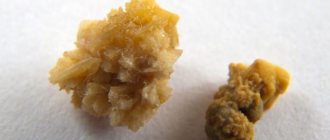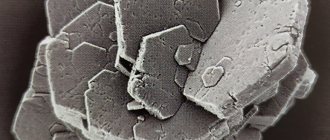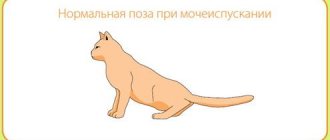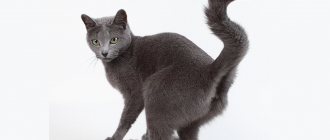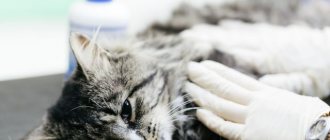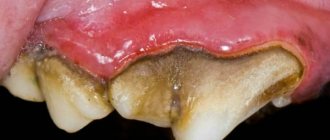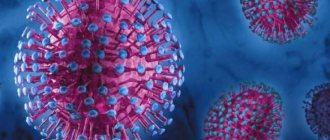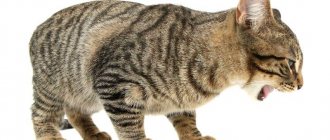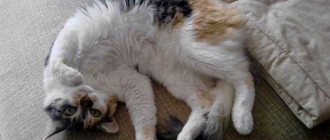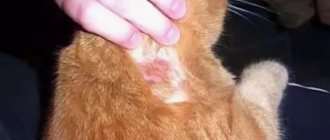Urolithiasis (UCD) is a pathology associated with metabolic disorders. It is often found in domestic cats, is accompanied by severe pain, worsens the quality of life and even reduces its duration. Therefore, if your pet has urolithiasis, you need to take immediate action - even if you suspect it, you should consult a doctor.
According to doctors, along with medications, therapeutic nutrition plays an important role in the treatment and prevention of diseases of the genitourinary system. It allows you to reduce unpleasant symptoms and reduce the amount of insoluble sediment in the urine, due to which the animal experiences severe pain when visiting the toilet.
Let's look at why KSD can develop, how to organize nutrition, and what cat food helps cope with the disease.
Ekaterina Alekseevna Nigova
Veterinary nutritionist at the Skolkovo Vet hospital. Work with any type of diet for cats and dogs - both ready-made and homemade food, including therapeutic diets. In practice, he works closely with the physical rehabilitation department. Regular participant in conferences and seminars, including as a lecturer.
Urolithiasis is one of the most common causes of urinary tract disease in cats (9). Domestic cats are believed to be prone to developing lower urinary tract disease (FLUDT) due to their origins in hot climate ancestors. Diet is one of the most important factors in the treatment of urolithiasis.
Choosing a veterinary clinic
We determine the veterinary clinic where you plan to go. A big PR company doesn't promise quality. The price is explained by the huge amount of money invested in advertising and “signboarding” of the establishment.
It’s great if you can ask your friends about clinics where their pets were treated “humanely.” If you travel far from them, it may be worth sacrificing time for the health of your pet.
A few more tips on how to spot an unverified veterinary clinic:
- Refusal to provide certificates and licenses for veterinary activities.
- Strange and suspicious behavior of the veterinarian (inconsistency, flattery, attempts to intimidate, shouting).
- Prices are too low (compared to other organizations).
- Refusal to freely visit the veterinary clinic.
“We have a sanitary day”
Beware of scammers!
When you contact the veterinary clinic, you are informed: “we cannot accept you at this address, sanitary day/repair/inspection.” How much intelligence does a dispatcher have? The client is persuaded to have a veterinarian come to his home. The price does not change.
A veterinary clinic can exist purely nominally. And the invited “Aibolit” will not bear responsibility. There is a high probability of running into a person without a veterinary diploma or simply an unprofessional.
It is better to find time to visit the veterinary clinic on your own. This is safer for the animal.
Features of the course of urolithiasis in cats
Cats have a high concentration ability of their kidneys. This can lead, on the one hand, to a very high density of urine (on average higher than in humans and dogs), and, on the other hand, to a disturbance in the sense of thirst. Presumably, this feature of the domestic cat makes it vulnerable to diseases of the urinary system and directly to the development of urolithiasis (UCD).
Bones and meat
Meaty bones are a traditional way for cats to obtain calcium. But in this case, you must adhere to certain rules, otherwise you cannot avoid intestinal blockage or other, more serious problems.
However, everyone knows the experience of wild cats - they catch mice and birds, eating them completely - with bones, thereby replenishing the calcium level in the body. Owners feed their tailed pets selectively - mostly boneless meat. So should you give your cat bones?
Bone products are an excellent source of collagen, calcium, chondroitin, and glucosamine.
— Do not give your cat sharp bones, which can injure the intestines and lead to internal bleeding. These are the tubular bones of the wings and legs.
- Cats should not be given medium or large bones - these will get stuck in the esophagus or throat.
- Choose suitable bones with meat from the whole carcass. Alternatively, grind the selected parts in a meat grinder or break into small pieces with a hammer.
— Do not give your cat bones that have undergone heat treatment. When boiling or frying, the chemical composition of the bone changes: protein, vitamins and fat go into the broth, and calcium phosphate loses its digestibility.
Pathogenesis of ICD
The pathogenesis of urolithiasis in cats may vary for each type of urolith. However, the direct mechanism of precipitation is associated with the oversaturation of urine with certain precursors capable of forming insoluble compounds that form the crystalline core of the future urolith.
In general, there are three types of solutions based on the concentration of dissolved substances:
- saturated - a solution in which the amount of dissolved substance has reached its maximum concentration (if it is exceeded, precipitation will occur);
- unsaturated - a solution in which the concentration of the solute is below the maximum;
- supersaturated (or supersaturated) - a solution in which the concentration of a substance is higher than in a saturated solution, under the same conditions. This is usually observed when the liquid is at a temperature lower than the one at which dissolution occurred.
A supersaturated solution is unstable and any change in parameters - a decrease in temperature, a shift in pH, the presence of possible centers of crystal formation - can lead to the onset of precipitation. In relation to a living organism, an important role is also played by the normal functioning of the urinary system, the frequency and volume of urination corresponding to the type. The presence/absence of crystal formation inhibitors in the urine that promote the presence of salts in dissolved form (pyrophosphates, zinc ions, glycosaminoglycans, citrate, etc.) is also important.
The influence of urine saturation on stone formation
Modern methods for assessing the risk of developing urolithiasis are associated with relative urine supersaturation (RSS) with urolith precursors. This term first appeared in human medicine in the 60s of the last century (2) and is now considered one of the standards for assessing the risk of urolithiasis in humans.
Relative supersaturation reflects the level of urinary precursors of a particular type in the urine and allows one to determine the likelihood of crystallization.
RSS evaluation is carried out as follows:
- feeding with the same diet (from 7 days to adapt when changing the diet);
- urine collection for at least 72 hours (for cats, 48-hour intervals are also described, but this does not apply to dry food diets);
- samples are examined for the content of dissolved substances and pH is determined;
- a calculation is carried out using any of the available programs (for example, SUPERSAT) to determine the RSS level. The ranges of values that determine the risk of crystalluria will vary for different types of stones. For tripel phosphates, the metastable RSS range is 1 to 2.5, for oxalate stones it is 1 to 10. Any RSS values above these limits suggest urine supersaturation.
The method of measuring RSS remains quite labor-intensive and is not applicable in routine clinical practice, however, the indicator of relative urine supersaturation is widely used in studies aimed at determining risk factors and the effectiveness of various methods of prevention and dissolution of uroliths.
There is also an indicator that determines the activity product ratio (APR). APR is calculated taking into account all promoters and inhibitors of uroliths in urine and is considered more accurate, but this analysis is more labor-intensive than calculating RSS and is used less frequently.
The degree of urine saturation for any particular component falls into one of three zones:
- Undersaturation. The crystalloid concentration is insufficient for crystal formation and hence there is no spontaneous crystal formation and no growth of existing crystals/uroliths. If uroliths can be dissolved (that is, if they are, in principle, made from soluble compounds), this process can also only occur in an unsaturated solution.
- Metastability. The urine is saturated with a particular crystalloid, but in this state, spontaneous formation of new crystals will not occur. If crystals or stones are already present in the urine, they may grow, and heterogeneous crystallization may also occur (around crystals of a different type - thus forming mixed uroliths).
- Unstable oversaturation. This is the most dangerous zone, since once the metastability limit is exceeded, crystal formation and urolith growth can occur spontaneously.
Risk factors
From the point of view of dietary therapy, there are four main factors that influence the likelihood of stone formation:
- Urine density;
- The number of dissolved urolith precursors (depending on the type of stones);
- urine pH;
- Presence/absence of crystallization centers.
Based on the listed factors, possible diet parameters are determined for each type of urolith. The exception is the fourth factor - the presence of crystallization centers usually does not correlate with diet and is associated with concomitant pathologies. These can be dead cells, protein, bacteria, leukocytes and other components of the suspension, which can provoke precipitation of crystals even in a metastable solution. To correct this factor, treatment of concomitant diseases is necessary.
The danger of urinary stones
Cat urine contains soluble and insoluble salts. If the animal is healthy, the substances are excreted in urine. When metabolic processes in the body are disrupted, the amount of insoluble elements increases, which gradually turn into sand. And stones (uroliths) are formed from sand. They can be very small or reach the size of a walnut. The cat experiences discomfort when the stones begin to injure the mucous membrane of the bladder and urethra (urethra).
The most serious threat is blockage of the urethra with a stone. The condition is possible only in cats and threatens the animal with death from intoxication and rupture of the bladder.
General approach to dietary therapy for urolithiasis in cats
The parameters of diets that ensure the prevention of relapses of urolithiasis will vary markedly depending on the type of stones. The choice of treatment is carried out similarly. Based on the pathogenesis, for the prevention of KSD it is necessary to maintain urine unsaturation with crystalloids. In addition to correcting the immediate precursors of uroliths, a decrease in the concentration of the solution can also be achieved by increasing the volume of the solvent, that is, reducing the density of urine. For cats, this is especially relevant due to the specifics of the urinary system.
The density of urine correlates with the level of water consumption. There are a number of recommendations for increasing water intake in cats:
- water selection;
- selection of bowls, using several bowls of water in different rooms;
- use of flowing water (drinking fountains);
- use of flavoring additives;
- use of wet / mixed diets, special industrial feeds with a high moisture content, for example, PRO PLAN®HC Hydra Care
- increasing sodium/sodium chloride in the diet.
Water selection
Cats may prefer bottled water or rainwater, but if the tap water is of good quality (without significant odor from chlorination or a generally poor quality water supply), most cats will consume it fairly readily. A more important parameter in this case is freshness - the water must be changed regularly and the bowls must be washed.
Arrangement of bowls
It may be recommended to use several water bowls placed in different parts of the house. This is especially true if there are several animals in the house. Foreign sources also recommend placing water tanks for cats in the yard, since, according to some data, cats that have the opportunity to walk are more willing to drink outside. For Russian urban conditions this is not very feasible, but if there is a safe range, this method is also worth using.
Bowl selection
It is believed that cats prefer small-diameter water bowls, but this is also ambiguous: for some cats, on the contrary, a wide bowl is preferable. Cats may also like different bowl materials - glass, ceramic, metal.
Using drinking fountains
Many popular websites recommend installing drinking fountains, suggesting that they are a more “natural” source of water for indoor cats. Such recommendations are based mainly on descriptions of the behavior of wild cats. However, currently available research does not support a significant difference in cats' consumption of running water versus regular bowls, or a difference in RSS when increasing the volume of water they drink is reported (3, 5). The sample of these studies is small (12 cats in one case and 9 in another), the issue requires further study. Nevertheless, the pronounced variability in the behavior of cats contributes to the recommendation for the use of similar methods of increasing water consumption.
When recommending this method, one may take into account the possible side effects: in David Grant's study, one of the cats showed signs of obsessive-compulsive disorder (aggressive grooming, aggression), which resolved when the fountain was replaced with a bowl. A one-time incident, of course, cannot serve as a reason for any conclusions, but it is worth remembering that any change in the cat’s environment can be a stress factor.
Flavoring additives
Water flavorings can also stimulate water consumption. Some sources recommend using drops of fermented milk products, canned fish broth, or other additives that have an attractive odor to cats. When using this method, it is especially important to change the water frequently and pay attention to the state of the cat’s gastrointestinal tract: with increased sensitivity to some components, additives can cause disturbances.
There are also commercial products designed specifically to increase your water intake. For example, wet cat food PRO PLAN® Hydra Care is a pouch with a moisture content of 94.5% - in fact, it is water with flavoring additives that has high nutritional appeal. When using this food, the owner must be warned not to remove the bowl of fresh water without additives. Regular fresh water should be available to the cat.
Wet food
Using wet or mixed diets is one of the most effective ways to reduce urine density in cats. Under natural conditions, felines can almost completely meet their water needs through prey, which averages 60–70% moisture, while dry cat food averages 6 to 12% moisture. When fed a dry diet (no specifics), cats may drink more water than those on wet diets, but often not enough to meet their optimal total water intake per day. Wet food has a good effect on increasing urine volume and therefore reducing RSS.
A number of studies have demonstrated marked differences in water intake among cats fed diets with different moisture levels. For example, in a 2011 study (1), six cats received the same complete dry food with a moisture content of 6.3%; the experimental groups received food hydrated to 25.4, 53.2, and 73.3% moisture content. The results can be seen in Figure 1.
Water intake levels were markedly different for cats fed the 73.3% moisture diet. The average volume of urine per day was also significantly higher for them. This group's RSS for calcium oxalate approached the unsaturation zone and was significantly lower than the RSS of cats fed the lower moisture diet. The RSS value for struvite-type stones did not change significantly for all groups.
Similar results in reducing urine density were obtained in other studies that compared the consumption of feeds with moisture levels of 70% or higher (4, 13).
Currently, no clear indicators have been found that determine the required amount of water for a cat per day. Available studies suggest that the moisture content of the diet should be at least 70% (including water drunk separately). There is an empirical norm of 2 ml per kg of body weight per hour, which serves rather as a guideline when assessing water consumption.
In practice, if there is a diagnosis of urolithiasis, it is assumed in any case to check and increase the current level of water consumption for the cat, focusing on the density of the urine. Reference intervals for most laboratories define the upper acceptable limit of urine relative gravity as 1.050 or 1.060—this is excessively high for cats with ICD. It is probably possible to recommend reducing the density down to 1.025–1.030. When interpreting test results, it is important to take into account the correctness of the preanalytical stage.
Table 1 shows several diets for comparison - dry and wet cat food, homemade diet and PRO PLAN® Hydra Care wet food.
The serving size is based on the average daily metabolic energy requirement of a 3 kg cat (with the exception of PRO PLAN® Hydra Care: this is an additional food, is not used in its pure form and its calorie content is insignificant). Feeding only wet cat food provides the required level of moisture, even without taking into account any additional water the cat may drink. For homemade diets, humidity varies markedly; in this case, an increase in water consumption will be required. A dry diet contains significantly less moisture and requires more careful monitoring of your cat's water intake.
Cons of a wet diet
A completely wet diet has a number of disadvantages. From an economic point of view, such a diet will be noticeably more expensive; it is not affordable for all owners. Also, purely wet diets can lead to increased tartar formation. Therefore, in practice, options for soaking dry cat food or using mixed feeding: dry and wet food are possible.
It is recommended to calculate how much water or wet food should be added for the desired result. For example, if you take the portion of dry food indicated in the table, you need to add 163.3 ml of water to achieve the total moisture level.
Soaking dry foods often reduces their nutritional appeal to cats. It is also not always available. By feeding two PRO PLAN® Hydra Care spiders and dry food, you can significantly increase your cat's moisture intake and increase the average daily water intake to the recommended values (close to 70%).
Increasing sodium/sodium chloride in the diet
Increasing the sodium or sodium content of the diet increases water intake, urine volume, and reduces RSS levels of urolith precursors.
It is assumed that for uroliths containing calcium, increasing the level of sodium in the diet is not recommended, as it provokes increased calciuria. However, the results of currently available studies on this issue are contradictory, and further study is required (11).
Another limitation is the presumed relationship between hypertension and dietary sodium levels. Traditionally, diets for cats with chronic kidney disease and cardiovascular disease have moderate sodium levels so as not to worsen the condition. However, a number of studies have shown no change in blood pressure levels between diets with different levels of sodium in cats. At this stage, recommendations to reduce its content in the diet with an increased risk of developing hypertension remain, but there is no reason to limit it for other patients (to an acceptable limit). For cats with urolithiasis, the use of salt can cause significant urine dilution, even on dry diets.
The upper tolerable limit of sodium in the diet according to NRC 2006 is more than 895 mg/MJ of metabolizable energy. A 2017 review updated the data, setting the permissible sodium content at 740 mg/MJ of metabolizable energy (11).
Therapeutic diets, for example, PRO PLAN® VETERINARY DIETS UR ST/OX Urinary, due to the increased sodium level relative to everyday diets, contribute to a noticeable dilution of urine in cats.
Prepare before going to the vet
In the office, you may have to provide the veterinarian with all possible assistance (hold the animal while they take blood for analysis, give an injection, extinguish aggression, calm your voice, scratch its ears, stroke it). If you know that you are terrified of blood, IVs, or definitely cannot withstand the type of medical interventions, then perhaps you should ask a friend or relative for help.
Find a veterinary certificate, veterinary passport.
Take:
- Leash;
- Collar;
- Muzzle;
- Carrying;
- A pack of napkins;
- litter;
- Bowl, water (at the veterinarian's discretion)
Prepare answers to possible questions from the veterinarian:
- Are all vaccinations up to date on the animal?
- Pet’s behavior in recent days, appetite;
- His diet;
- What drugs and medicines did you give to the animal;
- Latest test data (if available).
It’s better to make an appointment in advance - you’ll save time and be able to calculate when you’ll have to take time off. This does not apply to life-threatening situations where you will have to take an animal to a veterinary clinic without an appointment.
Be affectionate with your pet, play, talk to him. You can take his favorite toy with you so that while you wait for your turn at the reception, you can distract your friend from the new environment.
Furry, feathered or scaly ones also need to be prepared. No matter how much you want to treat your little one with something tasty, remember: you need an empty stomach. Feeding is prohibited!
You can wash your animal without using detergents. But it is important not to touch your pet if there is nasal discharge, watery eyes, salivation (salivation), dandruff, scratching, rashes, skin scabs, loss of hair/feathers/scales, wounds and other external manifestations of a potential disease.
If the veterinarian has instructed, collect the animal’s urine in a sterile container, and pick up the feces with a stick (no blades of grass, specks, or debris). Transfer the feces into a sterile container. Send to the biochemical laboratory within 6 hours. The feces are examined for eggs of roundworms, pinworms, tapeworms, liver flukes, echinoccus, alvecoccus, pork tapeworm, bovine tapeworm, and gastrointestinal bleeding is detected.
At the veterinary hospital, the animal’s blood will be analyzed for antibodies to allergens, viruses, bacteria, and parasites.
Effect of diet composition on urine pH
The acidity of the environment can significantly influence the risk of prolapse of various types of uroliths. Some types of stones are more dependent on urine pH (for example, struvite), others are less dependent (oxalates). However, in any case, the pH level is an important factor that is taken into account when therapy is carried out.
The pH level correlates with the microelement composition of the diet. You can calculate the expected pH, knowing the content of a number of components in the diet.
To determine urine pH, the cation-anion balance (CAB) indicator is used:
CAB (mmol/100 g DM) = 50*Ca + 82*Mg + 43*Na + 26*K – 65*P –28*Cl – 13.4*Met – 16.6*Cys
DS - dry matter.
pH is calculated as = (KAB * 0.021) + 6.72
Calcium, magnesium, sodium and potassium shift the pH of urine to the alkaline side, and phosphorus, chlorine and sulfur-containing amino acids (methionine and cysteine) - to the acidic side. It is advisable to take this into account when selecting additives that change the pH: if the diet contains a large number of alkalizing ions, its acidification with the help of an additive will be quite difficult, and vice versa.
The calculated pH may differ from the measured one due to additional factors acting directly in the bladder. For example, with concomitant cystitis, urease-producing bacteria noticeably shift the pH to the alkaline side.
The optimal pH range for the prevention of stone formation: 6.8–6.9.
Features of diet therapy according to the type of stones
Currently, there are four types of the most common types of stones: struvite, oxalate, urate and cystine uroliths, as well as a number of rarer (and currently little-studied) crystals.
Diet therapy for struvite type of urolithiasis in cats
Struvite, or tripelphosphate, is one of the most common types of uroliths in cats. The crystals are magnesium ammonium diphosphate, formula: MgNH4PO4*6H2O. Sensitive to urine pH: struvite precipitation occurs in an alkaline environment. Soluble in acidic medium.
In cats, struvite urolithiasis is most often primary, with crystals deposited in sterile urine (9). Presumably, high density urine plays a major role in the etiopathogenesis of the disease. Also, a number of studies have shown the relationship between the risk of struvite loss and diets high in phosphorus, magnesium, chloride and moderate protein (10).
Homemade unbalanced diets can cause the development of struvite urolithiasis in cats. Often such diets are based only on meat components and contain excess amounts of phosphorus and magnesium; an example of such a diet is shown in Figure 2.
Therapy to dissolve struvite should be aimed at reducing the RSS of uroliths to the unsaturated zone and maintaining urine pH at 6.2–6.5 (or lower). Prevention of relapses involves reducing the content of the main components of tripelphosphates in the diet - phosphorus, magnesium and ammonium - and maintaining urine pH no higher than 6.8–6.9.
Basic dietary requirements for cats with struvite urolithiasis:
- normalization of water consumption, reduction of urine density;
- reduction in magnesium and phosphorus content;
- a moderate level of protein - the main source of phosphorus in the diet (but not an excessive decrease, as this will shift the pH to the alkaline side);
- acidification of urine when it is necessary to dissolve struvites.
Dietary magnesium and phosphorus levels are recommended to be no more than 1.5 to 2 times the NRC minimum requirement for cats. For adult cats, the NRC lower limit of reference for phosphorus is 63 mg/kg metabolic body weight (12). A cat's metabolic mass is equal to body mass to the power of 0.67.
Correction of pH, first of all, should be ensured by the correctly selected composition of the diet. Specialized therapeutic diets such as PRO PLAN® VETERINARY DIETS UR ST/OX Urinary may be recommended. If the desired pH level on the medicated feed is not achieved, stone dissolution does not occur and a possible concomitant bladder infection is ruled out, acidifying supplements may be recommended. The most accessible is methionine, the dosage for cats is no more than 1000 mg per day (250 mg/kg body weight).
Long-term uncontrolled use of acidifying additives can lead to demineralization of bone tissue. Contraindications for use: acidosis (including against the background of chronic kidney disease), the period of growth and reproduction.
Diet therapy for oxalate type of urolithiasis
Oxalates are the second most common type of urolithiasis in cats. They are the calcium salt of oxalic acid, most often in the form of monohydrate (wewellite) or dihydrate (weddellite). Formula: CaC2O4*H2O / CaC2O4*2H2O.
It is generally accepted that the risk of oxalate deposition is higher when urine pH is low. This is also associated with a change in the frequency of occurrence of oxalates in the 1980s and 1990s: there was a tendency to noticeably limit the level of magnesium in diets and shift the pH to the acidic side (including as a measure to prevent the development of struvite), which could provoke an increase frequency of occurrence of oxalates. However, the issue remains controversial; a number of studies have shown no difference in the RSS of calcium oxalates at different pH levels (6), further study is required.
Currently, long-term maintenance of significant acidification is not recommended for cats. Cats may prefer sour tastes, which are used in the production of treats; it is advisable to take this factor into account when collecting an anamnesis.
The main risk factors include hypercalciuria and hyperoxaluria. Excess of vitamin D in the diet, including uncontrolled use of supplements, the addition of large amounts of vitamin C, and pyridoxine deficiency can increase the excretion of these components in the urine.
A number of foods contain high levels of oxalate precursors, but their effects in cats have been poorly studied and may vary. These foods include asparagus, tomatoes, celery, beans, spinach, sweet potatoes, broccoli, wheat bran and a number of other plant sources that are rarely included in a cat's diet.
Oxalates are insoluble, therapy is aimed at reducing urine density and preventing relapses.
The main parameters of feeding cats with oxalate type of urolithiasis:
- diluting urine, monitoring the level of water consumption by cats (the main method);
- reducing the level of calcium in the diet (but not below the NRC norm - 71 mg/kg metabolic body weight for adult cats);
- reducing the consumption of oxalic acid;
- maintaining the pH at 6.8 - 6.9 (with frequent relapses, it can be increased to 7.0 - 7.3, but there may be a risk of struvite loss, especially if the urine is insufficiently diluted);
- the use of specialized diets that are metastable in terms of RSS and APR for calcium oxalate;
- pH control is carried out through the diet; if this is not possible, you can use potassium citrate - from 75 mg/kg (cat’s weight) twice a day. It has been suggested that citrate may also serve as an inhibitor of oxalate crystal formation, but data in cats are currently limited.
There is a recommendation to reduce the protein content in the diet to the parameters of renal diets (aimed at shifting urine pH to the alkaline side), but this method for cats remains controversial.
The desired pH level can be achieved with the correct selection of the microelement composition of the diet. Recent studies in cats have shown that low protein levels are associated with decreased urine volume (which in turn increases the risk of recurrence of urolithiasis). Increased oxalate secretion was also influenced by high levels of starch in the diet (7). Therefore, for the oxalate type of urolithiasis, we can recommend dietary foods aimed at reducing the RSS of struvite and oxalates, for example PRO PLAN® VETERINARY DIETS UR ST/OX Urinary.
Hydroxyproline is part of the collagen protein. High levels in the diet have been suggested to increase the excretion of oxalate precursors into urine (7). Accordingly, with this type of ICD, it is not recommended to use treats and additional products with a high content of connective tissues for cats - cartilage, tufts, tails, ears, and so on. It is also not advisable to use broth: although it may help reduce the density of urine, broth contains a large amount of extractive proteins. If possible, it is worth using other methods to increase water consumption.
Diet therapy for urate type of ICD
Urates in cats are less common than oxalate or struvite types of urolithiasis. They consist of uric acid and ammonium urate and fall out when the urine is oversaturated with purine bases (hydroxypurines, aminopurines, methylpurines, caffeine, theobromine, xanthine, etc.).
The pathogenesis of the urate type of urolithiasis in cats has not yet been sufficiently studied. Presumably, it may be associated with the presence of a portosystemic shunt or chronic liver pathologies that provoke hyperammonemia. When diagnosing urate urolithiasis, it may be recommended to ensure that the cat does not have concomitant liver pathologies. Without control of the underlying disease, it will not be possible to control relapses of urolithiasis. However, in some cases lithiasis of unknown origin is observed.
Urates are formed mainly in acidic urine. In dogs, urate dissolution has been described using an alkalizing diet, but no dissolution protocols yet exist for cats. Therapy is aimed at preventing relapses.
Features of feeding cats with urate type ICD:
- decreased urine density;
- reduction in dietary purines. The foods richest in purines include offal (especially liver, kidneys, heart), broth, anchovies, shellfish, and shrimp. The lowest level is in egg and milk proteins. It is recommended to maintain an overall moderate protein level, but not below the NRC guidelines (4.96 g/kg metabolic body weight of the cat);
- maintaining urine pH at a level close to neutral (6.8–7.3).
If relapses occur frequently, renal diets that provide the minimum level of protein acceptable for cats may be recommended. An example of such a diet is PRO PLAN® VETERINARY DIETS NF RENAL FUNCTION. It is acceptable to use calcium citrate to alkalize urine. The use of allopurinol (a xanthioxidase inhibitor) in cats has received little research.
Diet therapy for cystine type of urolithiasis
Cystine uroliths are quite rare in cats; they are usually formed due to cystinuria, which occurs as a result of certain congenital disorders of amino acid metabolism. Diet therapy is aimed at preventing relapses.
Diet options:
- normalization of water consumption by cats;
- reduction in overall protein levels (foods high in sulfur-containing amino acids, such as egg whites, are excluded from the diet);
- pH can be maintained well above 7.0 (up to 7.5), but only under careful control;
- moderate sodium levels (increases cystinuria).
From commercial diets, for frequent relapses of cystine-type urolithiasis, renal diets may be recommended.
How to find out the truth
Another possible way for veterinarians to make dishonest money is to conceal the diagnosis. Let's say a veterinarian discovers a malignant tumor in a cat. But if he says that the tumor is benign and treatable. A housewife who dotes on her pet will give money for already useless procedures, medications and surgical interventions.
The veterinarian may deliberately “downplay” the diagnosis in order to earn more money. If something doesn't add up, insist on clarification. There is no need to be intimidated by unfamiliar terms - take a short break and try to find information on the Internet.
You are free to leave (or threaten to do so) to another clinic at any time.
Make sure that the veterinary clinic is honest - get tested in an independent laboratory.
Justice
What to do if an animal was injured as a result of unprofessional actions of a veterinarian:
- Write an official complaint addressed to the head of the clinic.
- File a complaint with the city veterinary department.
- You can contact Rospotrebnadzor.
- Contact a lawyer for help
The Law “On the Protection of Consumer Rights” and Article 245 of the Criminal Code “Cruelty to Animals” are the grounds for considering claims regarding the work of veterinary clinics.
Diet therapy for urolithiasis is a key factor in preventing relapses
The basis for preventing the recurrence of urolithiasis in cats is careful monitoring of water consumption and reducing the RSS of specific types of uroliths. It is not recommended to use feeds that significantly affect the pH of urine for the prevention of urolithiasis (except for rare exceptions when crystallization quickly begins with a shift in pH). The use of pH-altering additives may lead to the development of another type of urolithiasis or the formation of mixed stones. This is especially dangerous in the presence of concomitant diseases, including urinary tract infections.
Maintaining ideal body condition in cats is also important. Excess weight and the associated decrease in activity level may be an aggravating factor in terms of relapse of urolithiasis.
The average duration of use of therapeutic diets is from 3 to 6 months, but the decision in each specific clinical case must be made individually.
Bibliography:
- Buckley CM, Hawthorne A, Colyer A, et al. Effect of dietary water intake on urinary output, specific gravity and relative supersaturation for calcium oxalate and struvite in the cat. Br J Nutr 2011;106 Suppl 1:S128-S130
- Calcium Phosphate and Oxalate Ion-products in Normal and Stone-forming Urines. B. E. C. Nordin and W. G. Robertson. Br Med J 1966 Feb 19; 1(5485): 450–453
- Comparison of feline water consumption between still and flowing water sources: A pilot study. Christopher Pachel. Journal of Veterinary Behavior. Volume 5, Issue 3, May–June 2010, Pages 130-133
- Deng P, Iwazaki E, Suchy SA, et al. Effects of feeding frequency and dietary water content on voluntary physical activity in healthy adult cats. J Anim Sci 2014; 92:1271-1277
- Effect of water source on intake and urine concentration in healthy cats. David C. Grant, First Published June 1, 2010
- Esther S. Bijsmans, Yann Quéau, Alexandre Feugier, Vincent C. Biourge. The effect of urine acidification on calcium oxalate relative supersaturation in cats. Journal of Animal Physiology and Animal Nutrition Volume105, Issue3 May 2021, Pages 579-586
- Fernanda S. Mendonça, Raquel S. Pedreira, Bruna A. Loureiro, Thaila C. Putarov, Mariana Monti, Aulus C. Carciofi. Hydroxyproline and starch consumption and urinary supersaturation with calcium oxalate in cats. Animal Feed Science and Technology. Volume 246, December 2021, Pages 72-81
- Kamphues, J.; Schneider, D.; Leibetseder, J., 2004: Supplemente zu Vorlesungen und Übungen in der Tierernährung, 10. Aufl., Scharper, Alfeld
- Lekcharoensuk, C., C. Osborne & J. Lulich, 2001a. Epidemiologic study of the risk factors for lower urinary tract diseases in cats. Journal of the American Veterinary Medical Association, 218, 1429–1435
- Lekcharoensuk, C., C. A. Osborne, J. P. Lulich, R. Pusoonthornthum, C. A. Kirk, L. K. Ulrich, L. A. Kochler, K. A. Carpenter & L. L. Swanson, 2001b. Association between dietary factors and calcium oxalate and magnesium ammonium phosphate urolithiasis in cats. Journal of the American Veterinary Medical Association, 219, 1228–1237.
- Nguyen P, Reynolds B, Zentek J, et al. Sodium in feline nutrition. J Anim Physiol Anim Nutr 2017; 101:403-420
- Nutrient Requirements of Dogs and Cats. NRC 2006
- Thomas DG, Post M, Bosch G. The effect of changing the moisture levels of dry extruded and wet canned diets on physical activity in cats. J Nutr Sci 2017; 6:e9
Important points
- Refusal to vaccinate. This is dangerous for the animal and all those who will come into contact with it (people). Vaccination is a scientifically proven method of preventing many infectious diseases. Get your animal vaccinated by a trusted veterinarian (or with his approval yourself). It is important to get vaccinated against rabies - this is a fatal disease induced by the Rabies lyssavirus virus, which cannot be cured, but can be prevented.
- Anesthesia - inhalation, intravenous, anesthesia - epidural, conduction. They are necessary so that the animal does not suffer, to prevent painful shock. The veterinarian’s “hands on” are important here - both overdose and weak anesthesia lead to serious consequences (shock, poisoning, death) for the animal.
- Sterility, antiseptic. If you see that the veterinarian does not follow the rules of antiseptics (reuses disposable syringes, diapers, bandages, does not treat hands with antiseptic after contact with the previous animal), the best choice would be to contact another veterinarian.
- Important medicines:
- Antibiotics - amoxicillin, tilozil, trimethoprim, sulfadiazine, lincomycin, marbofloxacin;
- Antipyretics - paracetamol, salicylic acid preparations, antipyrine, butadione, amidopyrine;
- Anti-inflammatory drugs - vedaprofen, choline salicylate cycloferon, aspirin;
- Anesthetics - novocaine, lidocaine, dicaine, trimecaine;
- Hemostatics - fibrinogen, thrombin, vikasol, phytomenadione, calcium chloride, etamsylate;
- Antiparasitic - praziquantel, aversectin, albendazole, ivermectin, fluralaner.
If you care what happens to your pet, you should not neglect appointments.
Don't let unverified veterinary clinics endanger your pet and profit from their owner's feelings! If you have time and desire, it is worth trying to achieve justice in case of violation of ethical or legal standards.
